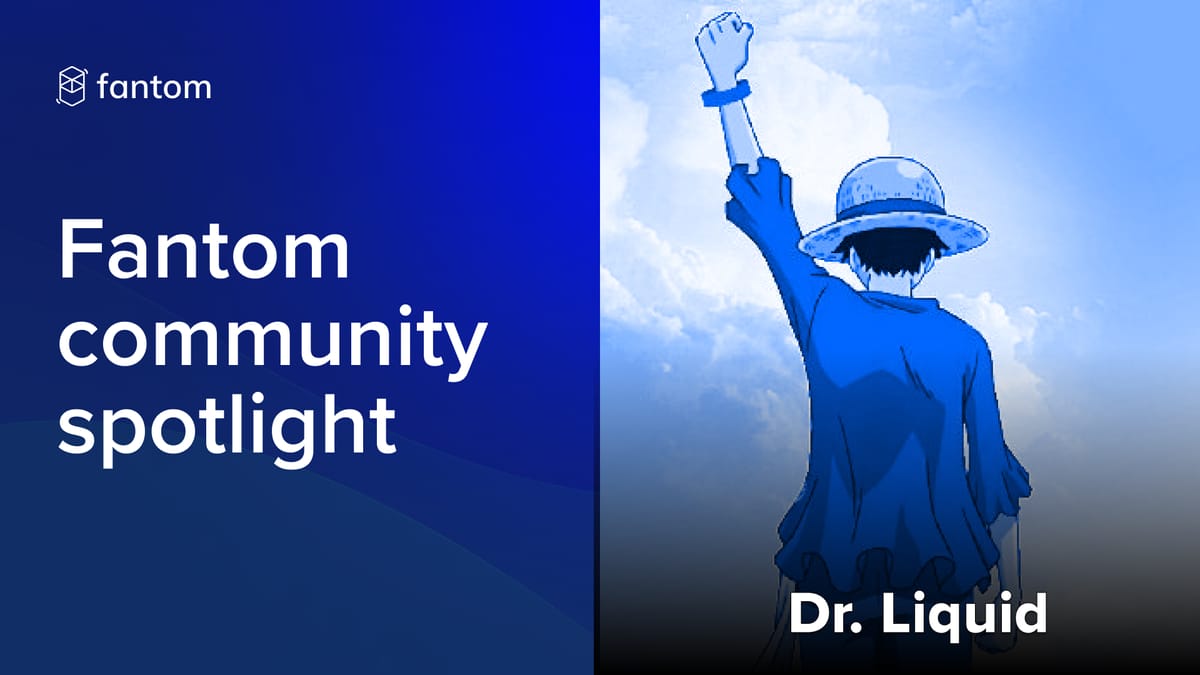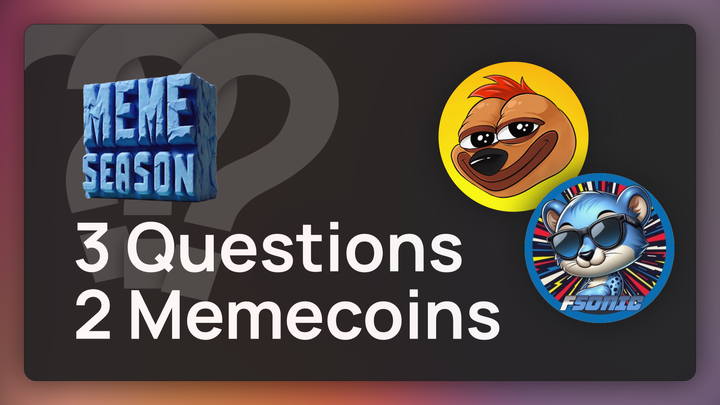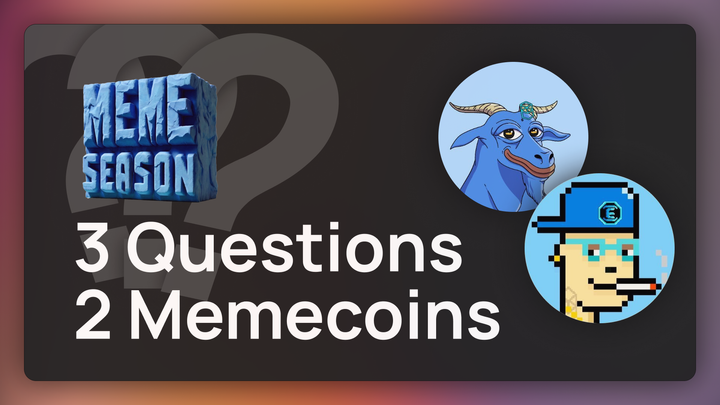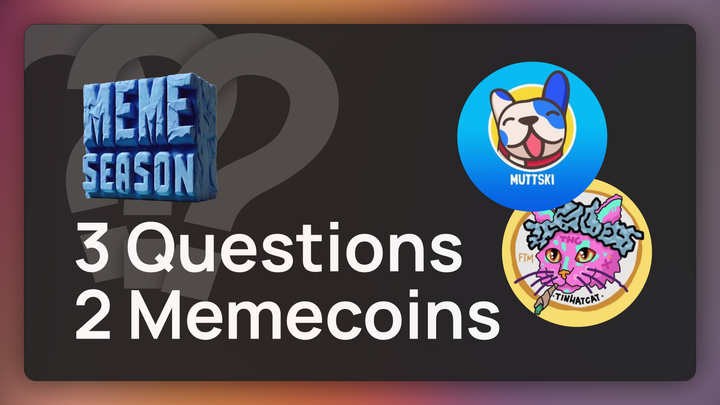Fantom Community Spotlight — Dr. Liquid

Through the fog breaks the bowsprit of the pirate ship, its bow piercing the choppy waters, the deck teeming with treasure chests of governance tokens. Atop the crow’s nest stands Dr. Liquid, directing the crew members below—there are still islands to conquer, treasure to collect.
Dr. Liquid has been steering LiquidDriver and its pirates across the Fantom ecosystem map, building the war chest.
Read on to learn about his origins, what it takes to run a protocol, and his thoughts on the future of liquidity mining.
What drew you to crypto?
A friend of mine started mining Bitcoin in 2017, and when I first heard about the concept I fell right down the rabbit hole. After some digging and a bit of research, I became interested mainly in Chainlink and other decentralized oracles.
With crypto, you can imitate the current traditional financial system and eliminate most of its limitations. Capitalism is the best solution we have at the moment, but we’re coming to a breaking point where it’s showing its limitations. Having a decentralized financial ecosystem should be a priority to give the same opportunities to everyone. Right now, it’s the rich becoming more rich. If you want to get a loan at a bank, it’s easy to get one for a TV, but it’s difficult if you want to start a small business. Having a decentralized financial system will allow capital to move even more freely between countries, which will make the capital cheaper and more efficiently allocated.I realized I was an inexperienced trader and a bad investor, but I loved the tech.
On the side, I was making electronic music and going to college.
When COVID hit, I got right back into blockchain tech. My days consisted of learning and researching, particularly around the concept of Proof-of-Stake.
At the time, I was a product manager for a fintech payment solution that was focused on streamlining the ordering process in the entertainment industry. Before that, I was a financial analyst.
I was on Telegram and met Lafa, now the founder of Deus.Finance. We started discussing economics, monetary policies, and some of the challenges facing central banks. He was building a derivatives platform, and asked me to help with issues around counterparty risk. I took the challenge and ended up working with Deus Finance for about six months.
From the moment I got comfortable with tokenomics engineering, I realized I wanted to build my own protocol. Gas fees on Ethereum were already through the roof, so I was looking at L1 alternatives. That’s how I came across Fantom: when I saw the DeFi infrastructure was already being built, I knew I needed to launch quickly if I wanted to have the first mover advantage.
That’s how the idea for Liquid Driver came to be. Spirit and Spooky launched, and we knew these DEXs would need liquidity, so the timeline aligned perfectly.
Even though Lafayette and I are now working on separate projects, we still have close alignment. For example, I want to introduce leverage farming on LD, and with Deus.Finance and their stablecoin we could have a similar solution to what MIM has with Bentobox, where you can move around, stake, and yield farm with leverage.
Who are you building Liquid Driver for?
I have to smile when I think about how far we’ve come since Liquid Driver’s launch.
It was a terrible launch, the token price collapsed, and a lot of people lost faith in the project.
As a result, I decided I would work as hard as I could to ensure that every early LD investor was profitable. Now, I receive weekly messages from old users who’d written off Liquid Driver and are now extremely grateful.
It brings me joy to build a protocol that offers the same wealth-creation opportunities to everyone—whether they’re rich or poor, in Africa or Asia.
What’s the most challenging part of scaling a team?
We went from a team of three to a team of fifteen full-time employees, and that required adjusting to a more organized project management structure.
I’m chaotic when I work. I get deep into work and always multitask. Unless it’s work that requires my full focus, I find the urge to work on multiple things at the same time. When you try to impose a framework on me, I hate it; adjusting to the constraints that come with building a team took some work on my part.
In terms of hiring, it’s crucial to recognize each contributor’s skill set, including their strengths and weaknesses. When communicating to your team or delegating tasks, you need to consider the entire business, including the user experience, in order to clearly articulate the “why” behind the task.
What are some of the skill sets you look for?
If you want to work in DeFi, you need to have a solid understanding of economics. Then take the time to really understand DeFi and how it works. Even if you come from a traditional finance background, understand that DeFi shares as many similarities as it does differences.
You also need to keep up to speed on how online culture evolves. Every time I show outsiders our Discord community, they’re baffled. It takes work to communicate with your community and partners, and I’ve found this is one place where sales skills can be very helpful.
How did your community develop?
As you may know, we have a pirate theme going on. When we were originally brainstorming for names, all we knew was we wanted to have a “watery” vibe for the UI. I’m a fan of the OnePiece manga collection, which is what gave me the inspiration for the pirate theme.
When we went to write our first tweet, we knew that the tone we used would set the stage for how we would communicate with our audience in the future. Were we going to be “meme-y,” or were we serious?
When we started recruiting community admins, they took the pirate theme to another level on their own, and the community responded to it naturally. Then we released our V2 with a pirate map, where the different DEXs were represented by their own “secret islands.”
How do you view the balance between developers maintaining centralized control over their own projects and achieving maximal decentralization?
Everything evolves at lightspeed in our space, and it’s usually necessary for developers to maintain some degree of control in order to optimize, make upgrades, and stay competitive. You can’t look at a dApp as it is today and expect that it will survive the next five years if its development stops there. But, of course, this kind of centralized control also introduces counterparty risk.
In our pseudonymous or anonymous world, people often refuse to assume responsibility for anything they do. If you launch a DeFi product, you have a lot of responsibility. Because we don’t have any regulation, we as individuals have to show that we can be accountable and as transparent as possible while remaining pseudonymous.
For example, I’m anonymous and under a multi-sig. People often ask about this, but nobody stops to ask who is on the multi-sig or how many signatures are needed.
Trust takes a long time to build. Right now, our community trusts us because we’ve put in the work through all market conditions, and we’ve always been transparent about our intentions and progress.
What role do you see LD playing in the Fantom ecosystem?
People like to make the analogy that Liquid Driver is the Convex of Fantom, but that’s not the case at all.
LD was born as a fork of Goose.Finance. The model at the time worked, but I hated it, and it stands for everything I’m against now.
There are some similarities with Convex. For example, we have wrapped a wrapped Spirit version, which is called LINSPIRIT. This is like the cvxCRV of Convex. This is how we acquire our Spirit, and this is exactly how it works on Convex.
But the primary difference is what we do with it.
On Convex, you deposit your Curve LP tokens and the protocol farms for you at a boosted rate. This is because Convex is acquiring veCRV via cvxCRV, which is their wrapped version. Liquid Driver, on the other hand, acquires Inspirit but incentivizes the pools with LQDR. We earn the rewards in Spirit, which we then distribute to xLQDR holders. xLQDR is similar to veCRV, unlike Convex which follows the veCVX model.
They’re two completely different products with two completely different business models. With upcoming changes, however, we’re going to get closer to a hybrid model.
Right now, LD works with SpookySwap, SpiritSwap, Beethoven-x, and Abracadabra. You can think of us as a one-stop shop for liquidity. We’re already seeing demand for our product from Frax and Deus, who are working with us to incentivize liquidity for their native tokens. We’ve also launched liHND, which is a wrapped version of Hundred.Finance’s veHND.
How do you approach building strong partnerships?
What I most love about Fantom—and I think every other builder will agree—is there is so much synergy between the different protocols, and we’re all in constant communication with each other.
It’s unparalleled. You just won’t find this kind of ‘builder’ synergy on any other L1 blockchain.
About a year ago, there was a lot of talk about protocol treasuries’ lack of diversification, and what these protocols could do to ensure that the value of their treasury wasn’t dependent on the price of their own native token.
Now, we do token swaps between protocols to signal our partnership and work together long term, but ultimately it looks the same as if you had just one token in your treasury, since the implicit agreement is that you’re not going to sell the partner tokens you’ve received.
If the point is to farm elsewhere to generate revenue, or acquire governance influence, that makes sense; that’s why we’re acquiring Spirit and Beets, for example.
Treasury token swaps are more psychological than anything: they signal our desire to work together and ensure a mutually beneficial partnership.
The most important thing, however, is to build partnerships that make sense economically. Don’t do it just for a Twitter banner.
Ultimately, we’re all fighting for market share, but it’s a pie that’s constantly growing. Most of the time, collaboration goes further than direct competition, but that doesn’t mean competition isn’t important. If you look at the DEXs on Fantom, you’ll find they’re all taking different approaches to deliver value to the end users, and this friendly competition drives continued innovation.
What’s the future of liquidity mining?
My perspective on this has certainly changed over time. I always have an idea about how things might evolve, and it always turns out differently than I expected.
That being said, current yields are unsustainable, and liquidity mining is not sustainable in the long term either. It’s a great way to bootstrap your product and your community, but the product needs to generate revenue streams that are not correlated with inflation and token emissions.
In a perfect world, people would deposit their liquidity into DEXs because of the returns from trading fees alone. At the moment, however, the 50/50 liquidity pool model is so inefficient that I don’t see it working long term.
Money markets can have emissions, even long-term emissions, because they capture revenue and can scale globally. But when you have another layer on top—like yield optimizers and vaults—relying on tokens to generate yield for their user base, then you have a sustainability problem. That’s because their core product is optimizing on top of other products, and you don’t need to launch a token to do that.
The present conundrum is that if you launch a protocol without a token today, you might not get very far.
Over time, however, we absolutely need less tokenization. There is a difference between tokenizing a real asset and tokenizing a decentralized protocol. With the former, you’re tokenizing existing value and revenue streams; with the latter, you’re creating a network that does not yet have any underlying revenue but that you expect will generate revenue once users begin to use it.
Ultimately, it doesn’t make sense to view an existing system at face value, as a finalized product. Right now the LQDR model relies on a token. That works well at the moment, but it’s not something that’s going to work for the next three years, and we’re planning accordingly.
We’re in a space that is highly experimental, and we’re testing models at a pace that wasn’t possible before. In the old days, it was a group of economists around a table discussing prior facts. Now, you can develop an economical model quite easily on a blockchain, and all the novel features that come with that.
We need to evolve at the same pace—if not faster—than the industry as a whole. If there’s one thing I can say with certainty, it’s that in a few years’ time Liquid Driver will be completely different.
Anything else you’d like to share with the Fantom Community?
I’m very grateful for the opportunity to work in this space and for the strong community that supports us. You can be sure that our entire team is working to make the Liquid Driver vision a reality.



